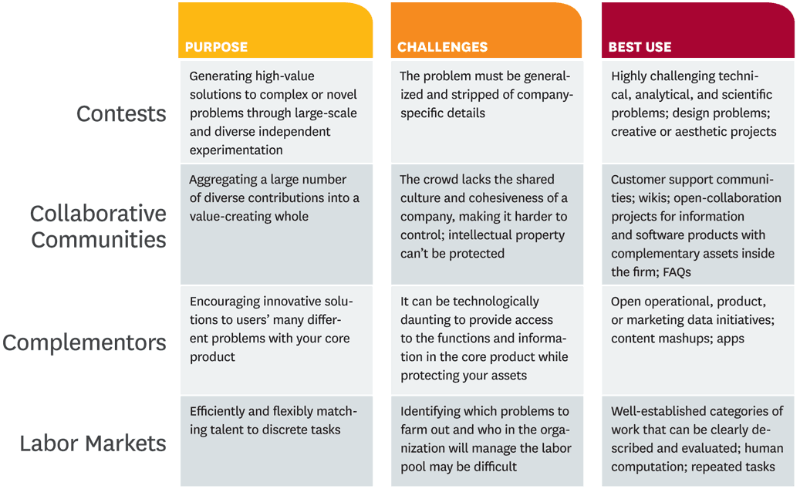
Organizations vs Crowds on Innovating

They can carry a lot of responsibility and have to obey legislation and regulations. They offer the salary and bonuses for their employees in return of services. Organizations may have a lot financial power to execute innovations but most of the people have hard time expressing their ideas. Responsibilities and accountability to perform everyday forces to use standardized processes and methods. All this in general makes people in organizations to work in closed mode in order to keep the wheels turning effectively.
Many times when people get out of their daily work they start doing things that are interesting and fun. They form loose crowds that have the same interest and start creating new things without centralized control. All this is done most of the time without any financial compensations only to develop personal skills and maybe get some reputation. These crowds may consist with people with varied skills and experiences. This creates the best breeding ground for innovative ideas.
While organisations are usually poor on innovating they can benefit from crowds. When organisation in faced with a problem, instead of trying to solve with internal resources use crowds to create new solutions.
Contests
Organisation can use the contests to solve highly challenging technical, analytic or scientific problems. These problems need to be understandable by a large group of outsiders easily. Organizations can use prizes and opportunities that rise the stature among peers. This provides large numbers of possible innovative solutions.
Collaborative communities
Organizations can support to create collaborative communities that use the large number of diverse contributors working to create the product or content. This is best used on the large number of simple problems that can be best tackled by community. Problems with this approach are that self-organization community is hard to control and may create problematic Intellectual property issues. Example Apache, Wikipedia.
Crowd complementors can be used to produce a large variety of innovative complementary solutions around the core product that organization is managing. Core-product provide complementors open API interfaces or collect revenues for complementors. This may expand the sales of the core product. Example Itunes, Android apps.
Complementors
By providing access to functions or information of the core-product external developers can created complementary innovations in simple way. This is most beneficial when high number and variety of complements is important. Other ways few partners or internal developers will server better. This may expand the functions of the core product and expand sales. This may even prove to be create source of proven innovations that can be implemented into the core product. This even without investing on large amount of prototype features that may prove to be useful.
Labor-market
Labor-market are efficient and flexible on matching talent to discrete tasks. Solve problems with tasks that can be difficult to organize within the company and are better to be purchased from resource pool when necessary. For easy to describe and evaluate human computation and repeated tasks. Benefits are the low transactional cost allow for extremely ”bite-size” outsourcing.
Ways to benefit from crowds (Kevin J. Boudreau, 2013)

